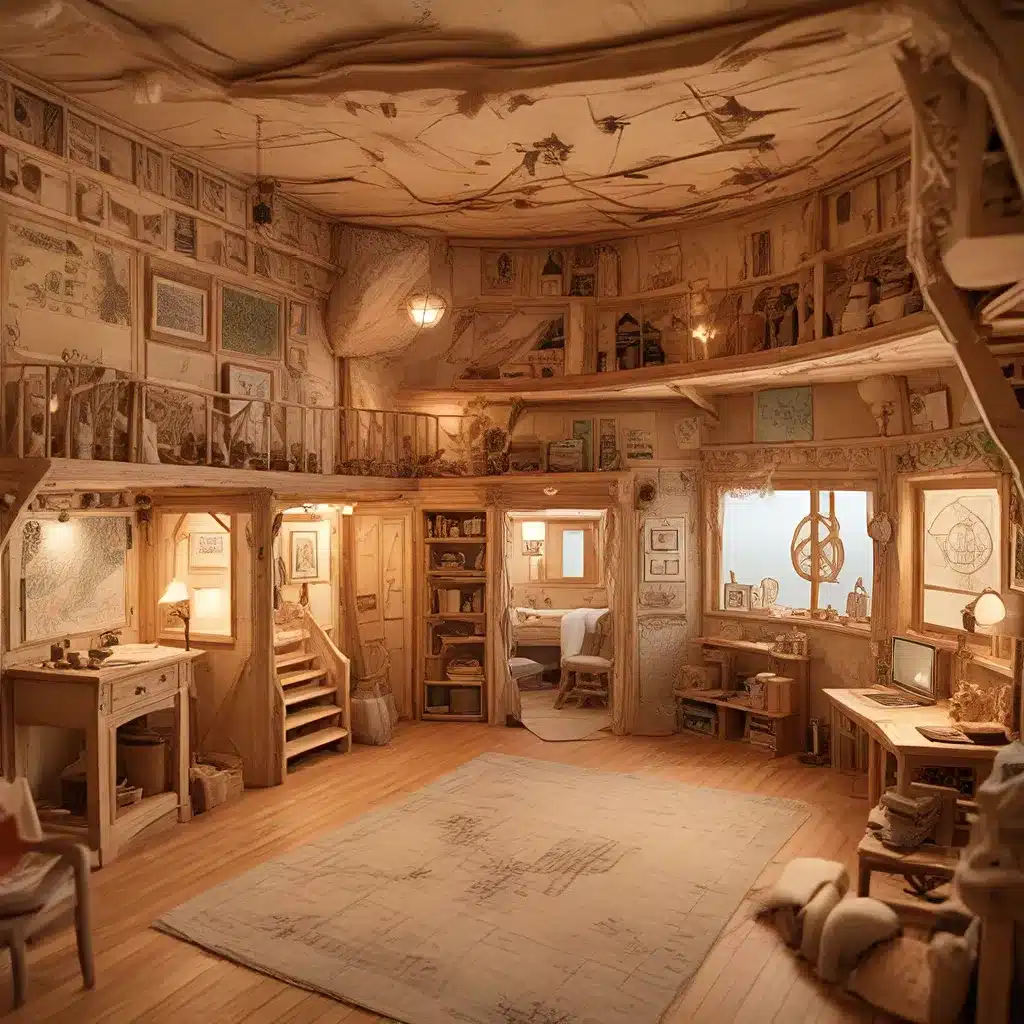
In the ever-evolving world of interior design, the art of storytelling has emerged as a powerful tool for creating truly captivating spaces. Gone are the days when a room was merely a collection of furniture and décor; today, it is a canvas upon which designers weave intricate narratives, seamlessly blending form and function to evoke specific emotions and experiences.
Spatial Layout: The Foundation of Narrative
The spatial layout serves as the foundation upon which these captivating stories unfold. An intelligently designed floor plan not only dictates the flow of movement but also sets the stage for the narrative to unfold. By considering how one area transitions seamlessly into another, designers can invite exploration and discovery, guiding occupants through a sequence of experiences.
Spatial storytelling involves the careful manipulation of scale, proportion, and sightlines to evoke specific emotions and narratives. Whether it’s creating cozy nooks for intimate conversations or open-plan layouts that foster a sense of community, thoughtful spatial design lays the groundwork for a compelling story to unfold.
Color Palettes: Painting with Emotion
Colors possess the power to evoke emotions, set moods, and convey narratives. From soft pastels that whisper serenity to bold hues that command attention, each color choice imbues a space with its unique personality and meaning. By strategically employing color palettes, designers can infuse their designs with layers of meaning and emotion, enriching the storytelling experience.
Consider the psychological effects of color when crafting a narrative. Warm tones like crimson and gold may evoke feelings of warmth and intimacy, perfect for spaces designed for social gatherings. In contrast, cool blues and greens can instill a sense of calm and tranquility, ideal for creating serene retreats.
Sensory Storytelling: Engaging the Senses
Great stories engage not only the mind but also the senses, and the same principle applies to interior design. Sensory storytelling goes beyond visual aesthetics, encompassing elements that stimulate touch, smell, taste, and sound to create immersive experiences.
Texture plays a crucial role in sensory storytelling, inviting tactile exploration and adding depth to the narrative. From plush carpets that beckon bare feet to rough-hewn stone walls that exude rugged charm, incorporating a variety of textures enhances the sensory richness of a space. Furthermore, consider the olfactory dimension of design – the subtle interplay of scents that can evoke memories and emotions.
Personalization: Infusing Spaces with Identity
No story is complete without its characters, and in interior design, the occupants themselves take center stage. Personalization is key to creating spaces that resonate with individuals on a personal level, reflecting their tastes, interests, and aspirations.
Incorporating elements of personal significance, such as family photographs or heirloom furniture, infuses a space with authenticity and depth. Moreover, interactive features like customizable lighting schemes or modular furniture arrangements empower occupants to shape their narratives within the space, truly making it their own.
Crafting Captivating Narratives
In a world increasingly dominated by digital experiences, the human desire for connection and a sense of belonging remains paramount. Storytelling in design fulfills this need, crafting spaces that feel like an extension of ourselves – a reflection of our experiences and aspirations.
By seamlessly weaving together spatial layout, color, texture, and personalization, designers can create immersive narratives that captivate and inspire. Whether it’s a cozy family retreat or a sophisticated entertaining space, the power of storytelling has the ability to transform a sterile room into a stirring sanctuary, resonating with the inhabitant on a deeper level.
As one of the leading interior design companies in the region, Urban Grace Interiors has mastered the art of spatial storytelling. By crafting personalized narratives that are tailored to each client’s unique needs and aspirations, we are able to create environments that not only delight the senses but also enrich the lives of those who inhabit them.
So, let us embark on a journey of spatial storytelling, where every room becomes a canvas for captivating narratives, and every design decision is imbued with a deeper meaning. By harnessing the power of this transformative approach, we can elevate the art of interior design, creating spaces that truly touch the hearts and souls of those who experience them.

